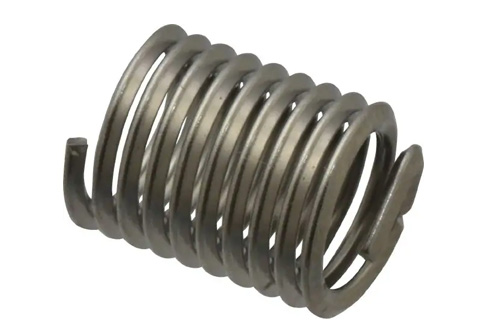DISCLAIMER: About a week ago I responded to a thread on the Airheads list dealing with the repair of a stud that had stripped out the thread. Someone mentioned that the information should be made available to others and asked if I would write up some of the do’s and don’ts of installing Heli Coil® inserts. I guess I do have a vested interest in that I sell Heli Coil® products in the Upper Mid-Western States but my purpose in writing up these comments is purely educational. Please contact your local sources for these products; I am available for questions. Please note that Heli Coil® is a registered trademark of the Emhart Corporation.
BACKGROUND: Heli Coil® inserts are made from 18-8 stainless wire, have a diamond cross section with a hardness of Rc 43-50, an ultimate tensile strength of from 200kpsi to 250kpsi and a surface finish of between 8 and 16 microinches. The final product is larger in diameter than the tapped hole. During installation the insertion tool applies torque to the insert reducing the diameter of the leading coil allowing it to enter the tapped hole. After installation the insert expands outwards with a spring force that permanently anchors the insert in place. The product was invented in the late 1930’s to provide a solution for the repair of aircraft engines, especially the threads to attach spark plugs and ‘jugs’. The stainless steel insert has a temperature range of from -320F to +800F.
SIZES, TYPES & MATERIALS: There are two designs; the STANDARD which has a free-running thread and the SCREW-LOCK which provides a locking torque on the mating fastener using “chords” on one or more coils of the insert. Available sizes are from #2 to 1 ½ inches in both UNC and UNF threads (each size has 5 different lengths available) and metric M2.2 to M39 in both coarse and fine threads (5 different lengths). Inserts are normally made from 18-8 stainless but other materials are available on special order. Lengths of inserts are referred to in diameters. A ¼-20 insert that is 0.250 long is a 1-diameter insert. (NOTE: Free state measurements of an insert are not valid due to the ‘spring’ nature of the parts.)


